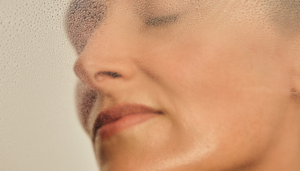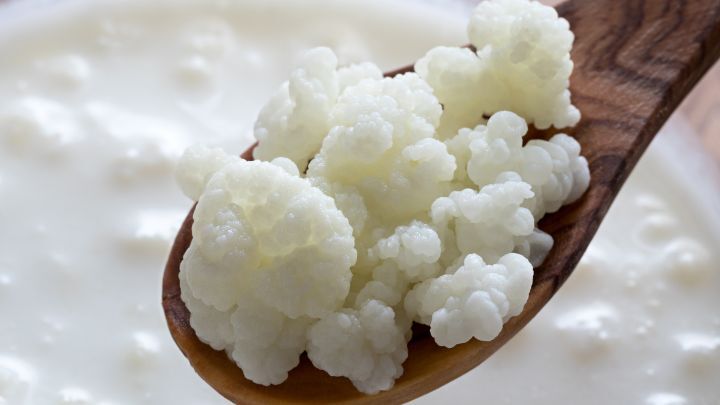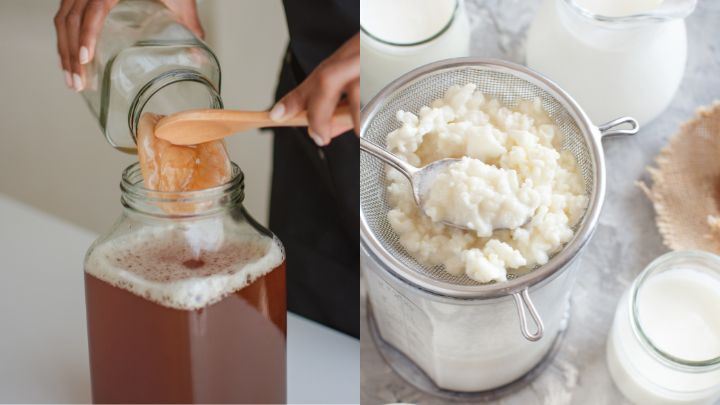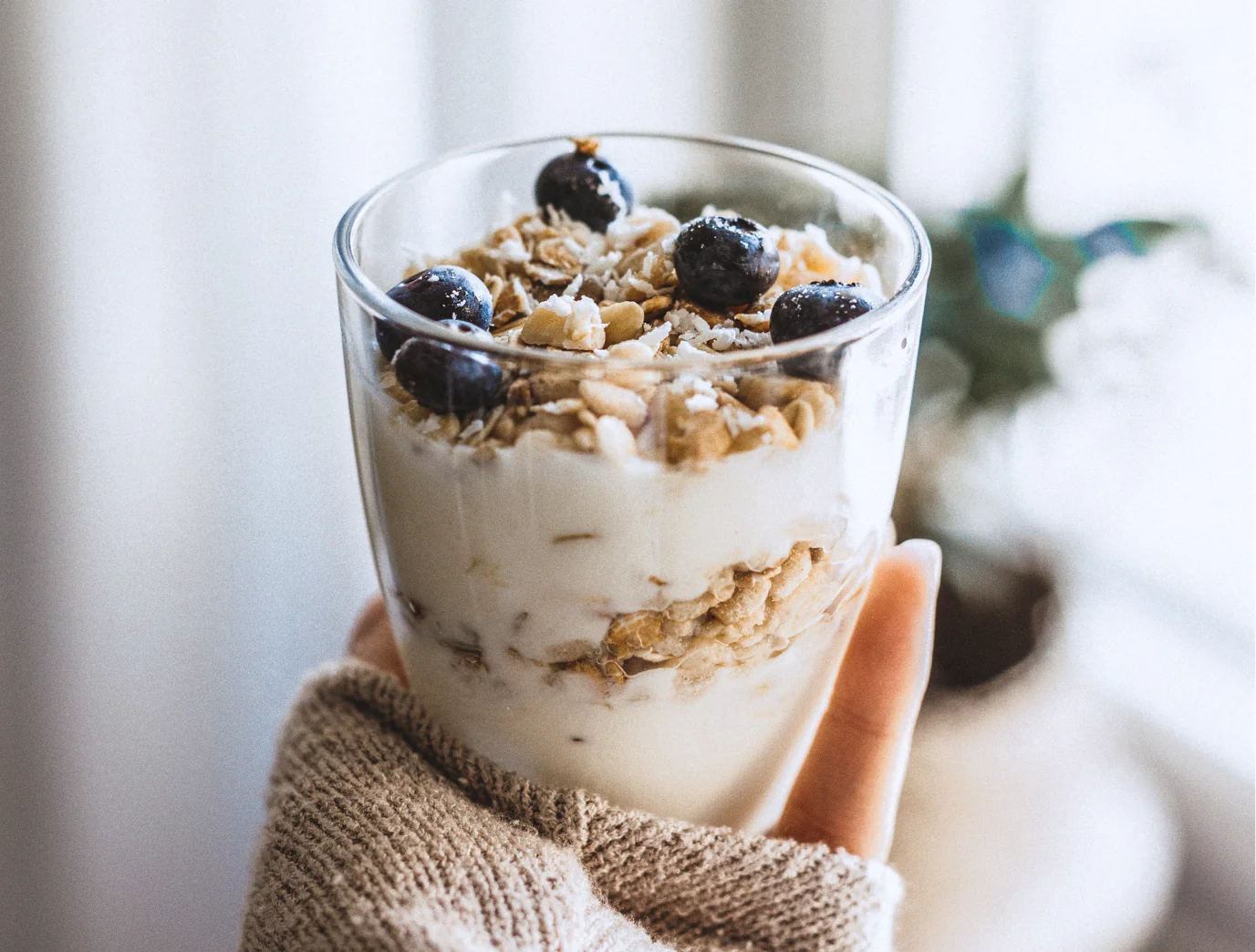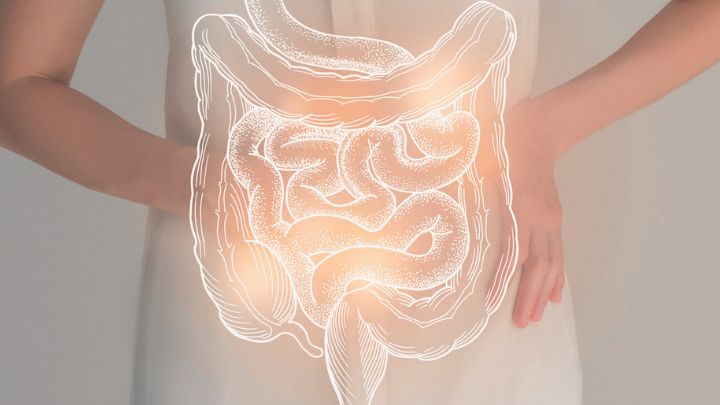Traditional herbal medicine has been a cornerstone of Traditional Chinese Medicine (TCM) for centuries, playing a crucial role in health maintenance and disease prevention.
The World Health Organization (WHO) also acknowledges the vital role of traditional, complementary, and alternative medicine in modern healthcare.
In Eastern Asia, tea is more than just a beverage—it’s a cherished daily ritual, much like your morning coffee.

Whilst black, green, and oolong teas have long been celebrated for their health benefits, a new contender is capturing attention: kombucha.
This probiotic-rich tea, brewed through a unique fermentation process, is not only making waves in health and wellness circles, but also attracting celebrities such as Lady Gaga, Zoe Kravitz, and Gwyneth Paltrow.
In this Avea article, we will delve into why kombucha is more than just a trendy drink to post on your Instagram.
Discover the remarkable properties of komucha, the science behind its potential health benefits, and why it might just deserve a spot in your longevity routine.
In this article
Free guide to reverse your biological age

- Master the science of rejuvenation.
- Apply proven tips to turn back the clock.
- Transform your health with top longevity specialists.
What are probiotics?
To fully appreciate what makes kombucha stand out, let’s start with the basics.
Probiotics are live beneficial microorganisms that play a crucial role in maintaining your gut and mental health.
Prebiotics, on the other hand, support the growth of these beneficial microbes. Dive deeper into probiotics vs. prebiotics here.
Probiotic supplements are being praised for their potential to enhance immune function by balancing the beneficial bacteria in your gut.
These non-pathogenic microorganisms don’t cause disease; instead, they help improve intestinal health and are needed to regulate nutrition, metabolism, and overall wellbeing.
But, the concept of probiotics isn’t new. Cultures worldwide have long harnessed the power of probiotics through fermented foods and drinks.
Some well-known fermented drinks include yoghurt, Yakult, kefir, and, of course, kombucha.
So, why is kombucha capturing so much attention today in the West? Let’s delve into its unique benefits and discover what sets it apart from other probiotic options.
Introduction to kombucha
What is kombucha?
Kombucha is made by fermenting sweet tea with a special starter culture known as SCOBY (a symbiotic culture of bacteria and yeast). In traditional Chinese medicine (TCM), kombucha is often called the “Tea of Immortality” or the “Elixir of Life [1].”
Where does kombucha come from?
Kombucha originated in northeast China around 220 BCE, and was cherished for its revitalising and cleansing properties.
In 414 CE, Dr. Kombu used kombucha to address the digestive issues of Emperor Inkyo, facilitating its spread from China to Japan.
During World War II, kombucha consumption extended beyond European countries to Russia and North Africa.
After the war, it was observed that cancer rates were lower in regions of Russia where kombucha was regularly consumed compared to those where it was not.
In the 1950s, Italy saw a peak in kombucha consumption. By the 2000s, Germany embraced kombucha as a practical remedy for ailments such as piles and metabolic disorders.
Today, kombucha drinking has become widespread globally due to its natural probiotic properties, and how easy it is to incorporate into your daily routine.
Whether you enjoy it as a refreshing drink on its own or flavour with fruits and herbs, this tea offers a delicious and healthful alternative to sugary beverages.
Finally time to say goodbye to Coca-Cola? Yes sir!
Experience Avea’s next-gen probiotic supplement
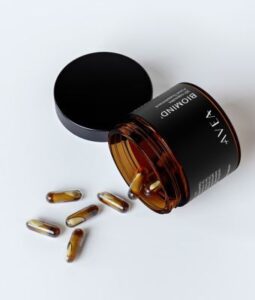
- 4x probiotic survival: Advanced Duocap® technology
- Targeted gut-brain support: Panax Ginseng, 10 strains (30Bn CFUs), Vitamin B6 & B12
- Backed by science: 1000+ studies
How is kombucha made?
To make kombucha, you start by steeping black tea leaves in boiling water and adding some sugar (recipe included by the end of the article).
Once the tea cools down, you add the SCOBY. The bacteria and yeast in the SCOBY then ferment the sweet tea for a while.
The fermentation process will lead to the formation of a cellulose layer on top, which is part of the SCOBY, while the tea itself becomes a tangy, slightly fizzy drink.
What is SCOBY?
Let’s break down what SCOBY does in making kombucha. SCOBY stands for Symbiotic Culture of Bacteria and Yeast. It’s a kind of jelly-like film that’s full of friendly bacteria and yeast [2].
In the first 14 days of fermentation, SCOBY is super active, rapidly growing and working its magic on the sweet tea.
After this initial burst, the growth slows down. This is because the conditions aren’t as ideal anymore—there are fewer nutrients and the tea gets more acidic.
This is actually good because it helps the kombucha get its flavour and probiotic benefits just right.
As fermentation progresses, a new layer of SCOBY, often called the ‘daughter SCOBY,’ forms on the surface of the liquid.
The thickness of this layer depends on how long you let it ferment and the shape of your container.
Whilst the SCOBY is at work, it lowers the pH of the tea, making it more acidic and fizzy. You’ll notice gas bubbles forming as part of this process.
By the end of fermentation, you’ve got a fizzy, tangy drink that’s full of probiotics. Just remember to handle your kombucha with care to keep it free from contamination.
What does kombucha consist of?
Kombucha’s makeup can change a bit depending on where it’s made, the local climate, and the specific types of bacteria and yeast used.
The fermentation process is also affected by water hardness, carbon source, tea concentration, and pH levels.
Each of these factors significantly influence the final flavour and health benefits of the drink. So, your kombucha might taste and act a bit differently depending on where and how it’s brewed.
Typically, it contains osmophilic yeasts like Brettanomyces, Candida, Lachancea, Pichia, Saccharomyces, Schizosaccharomyces, and Zygosaccharomyces.
Kombucha usually also includes acetic acid bacteria like Acetobacter, Gluconobacter, Gluconacetobacter, Komagataeibacter, and Lactobacillus, which are probiotics that have been shown to support gut health and boost immunity.
Can you make kombucha without sugar?
No. You cannot brew kombucha without sugar because the yeast and bacteria need it to grow, create a new SCOBY, and transform the sweet tea into those tangy acids, vitamins, and carbonation that make kombucha what it is.
As fermentation continues, the microbes use available sugars, mainly fructose and glucose, as primary carbon sources.
Glucose is especially important because it helps create the cellulose pellicle that forms on top of the liquid.
This pellicle is a unique feature of kombucha, influenced by the specific microbial mix present in each SCOBY.
New SCOBYs developed during fermentation can show variations in their microbial composition, which affects the properties of the cellulose produced and the overall characteristics of the kombucha.
Does kombucha contain caffeine?
Yes, kombucha does contain caffeine, but the amount depends on the tea used to brew it. Typically, black and green teas, which are common bases for kombucha, contain caffeine.
During fermentation, some caffeine is broken down by the microbes, but a significant portion remains.
The perceived threshold level for caffeine is 0.2 g/L (Tran et al., 2020), while Chakravorty et al. (2016) reported that concentration of caffeine ranged from 0.6 to 1.0 g/L in kombucha fermented with black tea [3].
This means, on average, a 240ml serving of kombucha has about ⅓ the caffeine content of the same amount of tea. So, if you’re extra sensitive to caffeine, keep this in mind when enjoying your kombucha (Jayabalan et al., 2014; Marsh et al., 2014).
Does kombucha contain alcohol?
Yes, kombucha also contains a small amount of alcohol. This occurs during fermentation, when the yeast in the SCOBY converts sugars into alcohol.
Kombucha is typically marketed as a non-alcoholic beverage, which under the United States federal law means it must have less than 0.5% alcohol by volume (ABV).
However, some studies have found that certain kombucha products can contain alcohol levels higher than 0.5% ABV.
Whilst the alcohol content is usually minimal, it’s important to be aware that it can occasionally be higher than expected [4].
Understand the science behind Avea’s Biomind
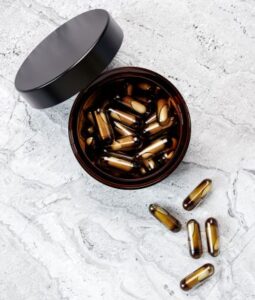
- Gut-mind axis: Discover how Biomind supports this crucial connection.
- Innovative technology: Learn about the advanced Duocap® that enhances probiotic survival up to 4x.
- Proven formulation: Understand the benefits of Panax Ginseng, 10 probiotic strains, and essential Vitamins B6 & B12.
The science behind kombucha
What makes kombucha so special?
A byproduct of kombucha fermentation is the cellulose mat, valuable for nano-cellulose production.
This bacterial cellulose is similar to native cellulose and boasts unique properties such as:
- high mechanical strength
- elasticity
- antibacterial qualities
- thermal stability
- biodegradability
- hydrophilic
- adsorptive
- has a fibrous nanostructure
Thanks to these properties, bacterial cellulose is widely used in various fields, including the food industry, ecology, paper production, cosmetics, textiles, nanocomposites, and biomedical and biotechnology applications.
Why kombucha metabolism matters?
During fermentation, the yeast in kombucha breaks down sugar (sucrose) into simpler sugars (glucose and fructose), producing carbon dioxide (CO2) and a small amount of ethanol.
This process gives kombucha its characteristic fizz. Meanwhile, acetic acid bacteria convert these sugars into acetic acid and gluconic acid, lowering the pH and creating the tangy, slightly acidic flavour.
The fermentation process enriches kombucha with beneficial compounds like catechins, theaflavins, and organic acids, known for their antioxidant properties.
Additionally, the yeast and bacteria produce vitamins and probiotics, which can help digestion, boost your immune system, and improve your gut health.
The interplay of yeast and bacteria during fermentation creates a nutrient-packed drink that supports overall well-being.
Crucial metabolites present in kombucha
What’s in kombucha and what makes it good for you, you might ask. When it ferments, it creates several acids, each with its own benefits:
- Acetic acid: This is what gives kombucha its tangy, vinegar-like taste. Over time, the amount of acetic acid decreases.
- Gluconic acid: Known to help detoxify your body.
- Glucuronic acid: Shown to support liver function and protect cells from damage.
- Citric, Malic, Tartaric, Malonic, Oxalic, Succinic, Pyruvic, Saccharic, and d-Saccharic acid-1,4-Lactone (DSL): These acids promote health from various angles. DSL, for example, helps detoxify and has strong antioxidant properties.
Here’s how these acids can benefit you:
- Antimicrobial effects: Many of these acids, like oxalic and saccharic, can help fight off germs and might even improve sleep.
- Liver detoxification: Glucuronic and malic acids can support your liver in clearing toxins.
- Cell protection: They protect against cellular damage.
Kombucha also contains different types of sugars that influence it’s taste and its impact on energy levels:
- Monosaccharides: Simple sugars like glucose and fructose.
- Disaccharides: More complex sugars like sucrose.
In addition to acids and sugars, kombucha is also rich in vitamins:
- Vitamin B1: Helps with anti-ageing.
- Vitamin B2: May prevent arthritis and allergies.
- Vitamin B12: Supports memory.
- Vitamin B6: Helps in fighting depression and stabilising mood.
- Vitamin C: Boosts skin health and reduces stress hormone levels.
Kombucha also has polyphenols, which are antioxidants. These can help protect against diseases like cancer and heart disease.

Fun fact
Is kombucha healthy?
Kombucha’s health benefits come from the tea it’s made from and the substances that form during fermentation, like glucuronic acid, acetic acid, polyphenols, B vitamins, and more [5].
Several animal studies have shown the benefits of kombucha in
- fighting harmful bacteria [6]
- supporting liver and gut health [7]
- boosting the immune system [8]
- helping with detoxification [9]
- offering antioxidant and anti-tumor effects [10]
- potentially impacting blood glucose, dyslipidemia and body weight [11]
- protecting the heart [12]
- reducing the virulence of pathogens like vibrio cholerae [13]
- supporting kidney health [14]
- protecting DNA from damage [15]
- helping heal stomach ulcers [16]
- boosting general health and longevity [17]
Kombucha may also help prevent and manage diseases like cancer, diabetes, and neurodegenerative conditions.
These research were performed in animals like rats, mice, and pigs, as well as in human blood cells.
However, more clinical trials on humans are needed to fully confirm all the benefits.
Can I make kombucha at home?
Yes, you can make kombucha at home. Industrially produced kombucha drinks are often pasteurised, eliminating the beneficial microorganisms.
For a truly microbiotic kombucha, seek out products with live cultures or make your own with the following steps.
You can find the necessary SCOBY in health food stores, organic shops, or online, typically bundled with a kombucha tea mix and starter liquid.
Here’s how you can brew kombucha at home, step by step:
- Prepare the tea: Boil water and steep black or green tea (about 5 grams per litre) for 10–15 minutes. Remove the tea leaves or bags.
- Add sugar: Dissolve approximately 50–100 grams of sugar per litre of tea while it’s still hot. Let the sweetened tea cool to room temperature.
- Add SCOBY and starter tea: Pour the cooled tea into a glass jar and add a SCOBY along with some previously fermented kombucha (starter tea) to lower the pH and prevent contamination.
- Ferment: Cover the jar with a breathable cloth and secure it with a rubber band. Let it ferment at room temperature (20-30°C) for 7–14 days, tasting periodically until it reaches your desired flavour.
- Second fermentation (optional): For a fizzy kombucha, transfer the fermented tea to airtight bottles and let them sit at room temperature for an additional 1–3 days before refrigerating.
Ensure all equipment is sanitised to avoid contamination. This process is adapted from standard fermentation practices described in this article from (Rosie Loves Tea).
Side effects of kombucha
Despite its benefits, kombucha has potential side effects and health risks. The Centers for Disease Control and Prevention (1994) stated that consuming around 120ml daily is safe.
A 1995 FDA evaluation confirmed kombucha’s safety in human [18].
Risks arise if kombucha is improperly prepared; those with preexisting conditions should avoid it due to the risk of metabolic acidosis.
Things to consider about kombucha
Is kombucha safe to consume?
Kombucha is safe if made properly, but be mindful of its alcohol, caffeine, and sugar content.
Adhering to safety standards and clear labelling ensures consistent quality, making it easier for anyone to enjoy its gut health benefits with confidence.
What science has to say about kombucha?
Research into kombucha’s health benefits is expanding, but many claims are based on preliminary studies and anecdotal evidence.
While some benefits have been observed in lab and animal studies, human clinical trials are still needed to confirm most effects.
So, is kombucha the best tea for your health? You decide.
References







